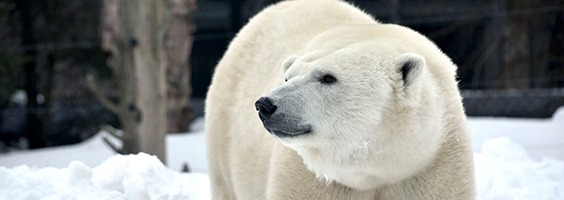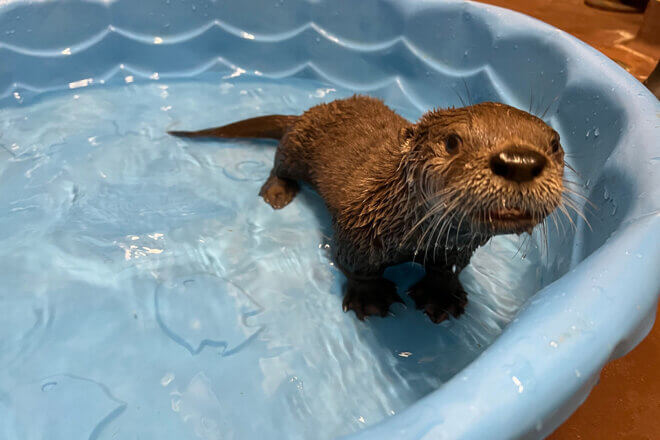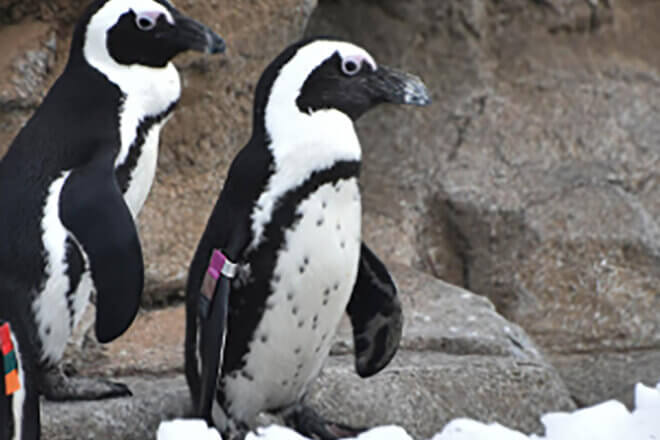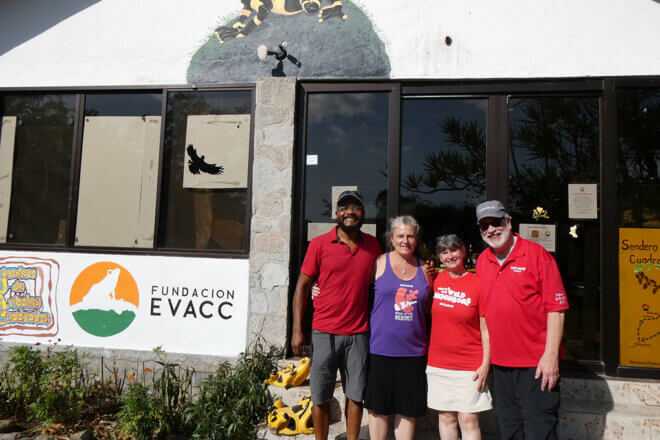Maryland Zoo staff usually lets nature take its course when it comes to polar bear breeding. But what do you do when you have a female bear, but no male? The Maryland Zoo is excited to announce that it has teamed up with the Cincinnati Zoo’s Conservation and Research of Endangered Wildlife (CREW), to participate in a reproductive research project by artificially inseminating Anoki, the Zoo’s 21-year-old female polar bear.
“Anoki and Magnet were paired for many years before he died, but with no success. Last year, the research group at CREW reached out to us about performing artificial insemination (AI) with Anoki,” said Erin Cantwell, mammal collection and conservation manager for the Zoo. “Since poor reproduction is one of the biggest factors affecting the aging zoo polar bear population, the opportunity to participate in ground breaking research and contribute to the overall knowledge of polar bear reproduction was very appealing to us.”
This is the fifth polar bear artificial insemination for the team at CREW since 2012. “We remain hopeful that Anoki may be the first polar bear to produce cubs as a result of an AI. She was an excellent candidate for this procedure- she is healthy, appears to be cycling normally, and female polar bears can produce cubs well into their twenties” said Dr. Erin Curry, reproductive physiologist at Cincinnati Zoo’s Center for Conservation & Research of Endangered Wildlife (CREW). “Only a handful of AIs have been performed in this species and we continue to optimize and refine our techniques at each AI attempt. Anoki and the Maryland Zoo have contributed enormously to advancing the science of assisted reproductive technologies in this species.”
The AI procedure involves the use of hormone therapy to help the female polar bear come into estrus. In the weeks leading up to the AI, Maryland Zoo animal care staff worked extensively with Anoki to train her to voluntarily accept hand injections of the hormones. “Our staff and their dedication to training was critical to this procedure,” said Dr. Ellen Bronson Director of Animal Health, Conservation, and Research at The Maryland Zoo. “Thanks to the training, Anoki received both necessary hormones at specific intervals through hand injections. When the CREW researchers arrived for the AI, Anoki appeared to be in estrus and they mentioned that this was the first time in the study that any facility had both of the hormones hand injected.”
In February, Maryland Zoo veterinarians and animal care staff assisted the team from CREW, led by Dr. Erin Curry, with the AI procedure using sperm from Hudson, a male polar bear at the Brookfield Zoo in Chicago. Anoki was anesthetized and taken to the Zoo’s Hospital where the team from CREW was waiting. With the aid of an endoscope, they were able to pass a catheter through her cervix and into the uterus, where the sperm was deposited. “The entire AI procedure took less than 45 minutes and was minimally invasive,” continued Bronson, “We also used the opportunity to give Anoki her routine examination and run testing to check her general health, which continues to be excellent.”
Polar bear reproduction is a complex process hinging on “delayed implantation,” meaning that polar bears breed in the spring but the embryo does not become implanted until four to six months later. In order for the embryo to implant and develop into a cub or cubs, the female must feel that all conditions are perfect — she must be well fed and the right weight, while finding a safe, quiet place to create her den and give birth or her body reabsorbs the embryo.
“While we know the chances of a successful polar bear pregnancy are slim, we are still hopeful. To this end we are going proceed with denning as if we had seen natural breeding,” continued Cantwell. “During denning, Anoki will be off exhibit with access to a secluded den. In an effort to mimic denning in the wild and isolate her from outside activity as much as possible, we limit the sights, smells and sounds to which she is regularly exposed. We need to do everything we can to provide an undisturbed place for Anoki to feel safe enough to give birth if she is indeed pregnant.”
At this time, all of the denning preparations are complete and Anoki is behind-the-scenes. “There is no pregnancy test for polar bears,” concluded Cantwell. “Now that she is denning, we just have to wait and see what happens during the next few months. Whatever the outcome, The Maryland Zoo is proud to work with our Zoo colleagues at CREW to contribute to the growing knowledge and science of polar bear reproduction.






Share this article